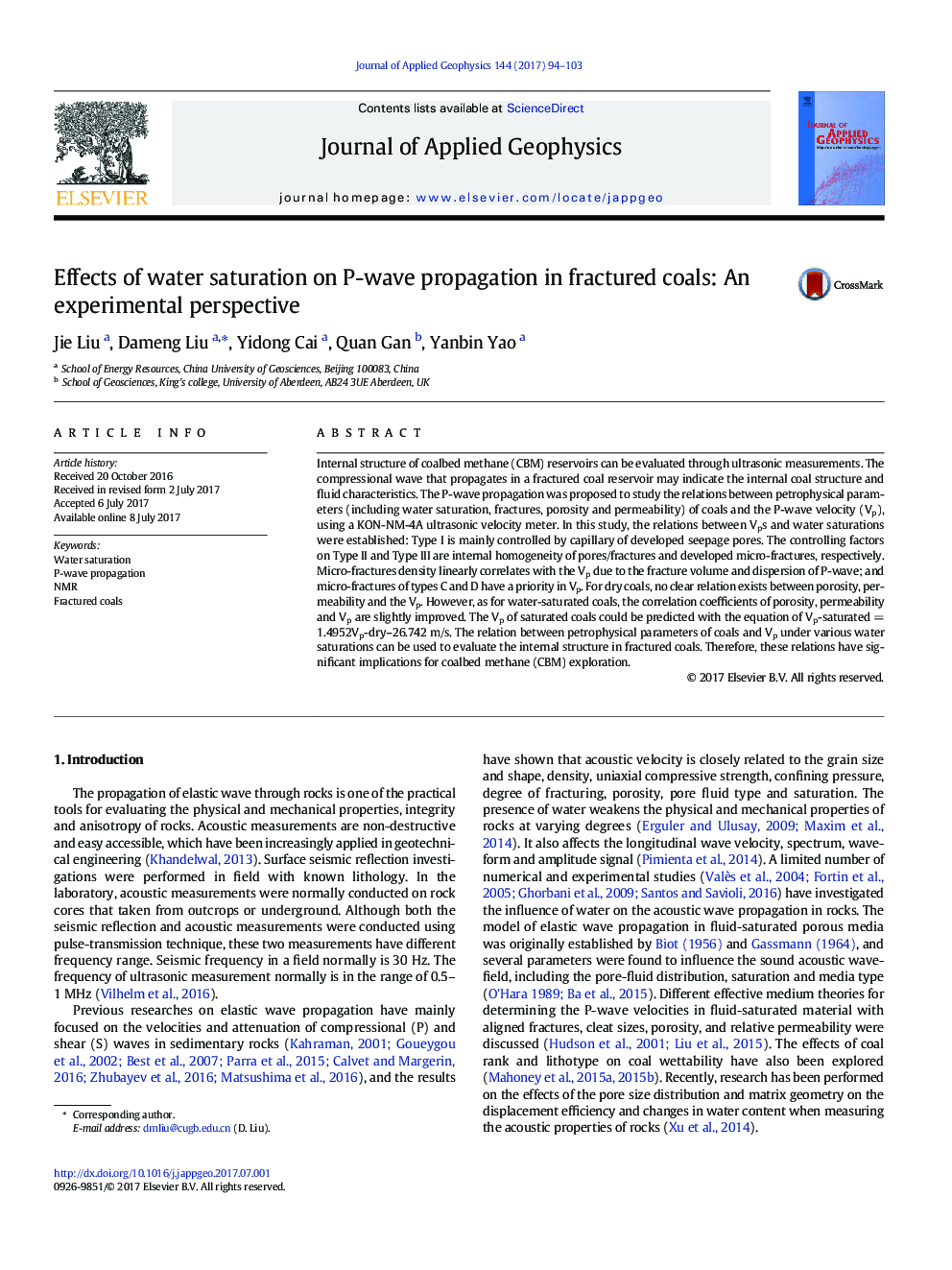| Article ID | Journal | Published Year | Pages | File Type |
|---|---|---|---|---|
| 5787075 | Journal of Applied Geophysics | 2017 | 10 Pages |
Abstract
Internal structure of coalbed methane (CBM) reservoirs can be evaluated through ultrasonic measurements. The compressional wave that propagates in a fractured coal reservoir may indicate the internal coal structure and fluid characteristics. The P-wave propagation was proposed to study the relations between petrophysical parameters (including water saturation, fractures, porosity and permeability) of coals and the P-wave velocity (Vp), using a KON-NM-4A ultrasonic velocity meter. In this study, the relations between Vps and water saturations were established: Type I is mainly controlled by capillary of developed seepage pores. The controlling factors on Type II and Type III are internal homogeneity of pores/fractures and developed micro-fractures, respectively. Micro-fractures density linearly correlates with the Vp due to the fracture volume and dispersion of P-wave; and micro-fractures of types C and D have a priority in Vp. For dry coals, no clear relation exists between porosity, permeability and the Vp. However, as for water-saturated coals, the correlation coefficients of porosity, permeability and Vp are slightly improved. The Vp of saturated coals could be predicted with the equation of Vp-saturated = 1.4952Vp-dry-26.742 m/s. The relation between petrophysical parameters of coals and Vp under various water saturations can be used to evaluate the internal structure in fractured coals. Therefore, these relations have significant implications for coalbed methane (CBM) exploration.
Keywords
Related Topics
Physical Sciences and Engineering
Earth and Planetary Sciences
Geophysics
Authors
Jie Liu, Dameng Liu, Yidong Cai, Quan Gan, Yanbin Yao,
